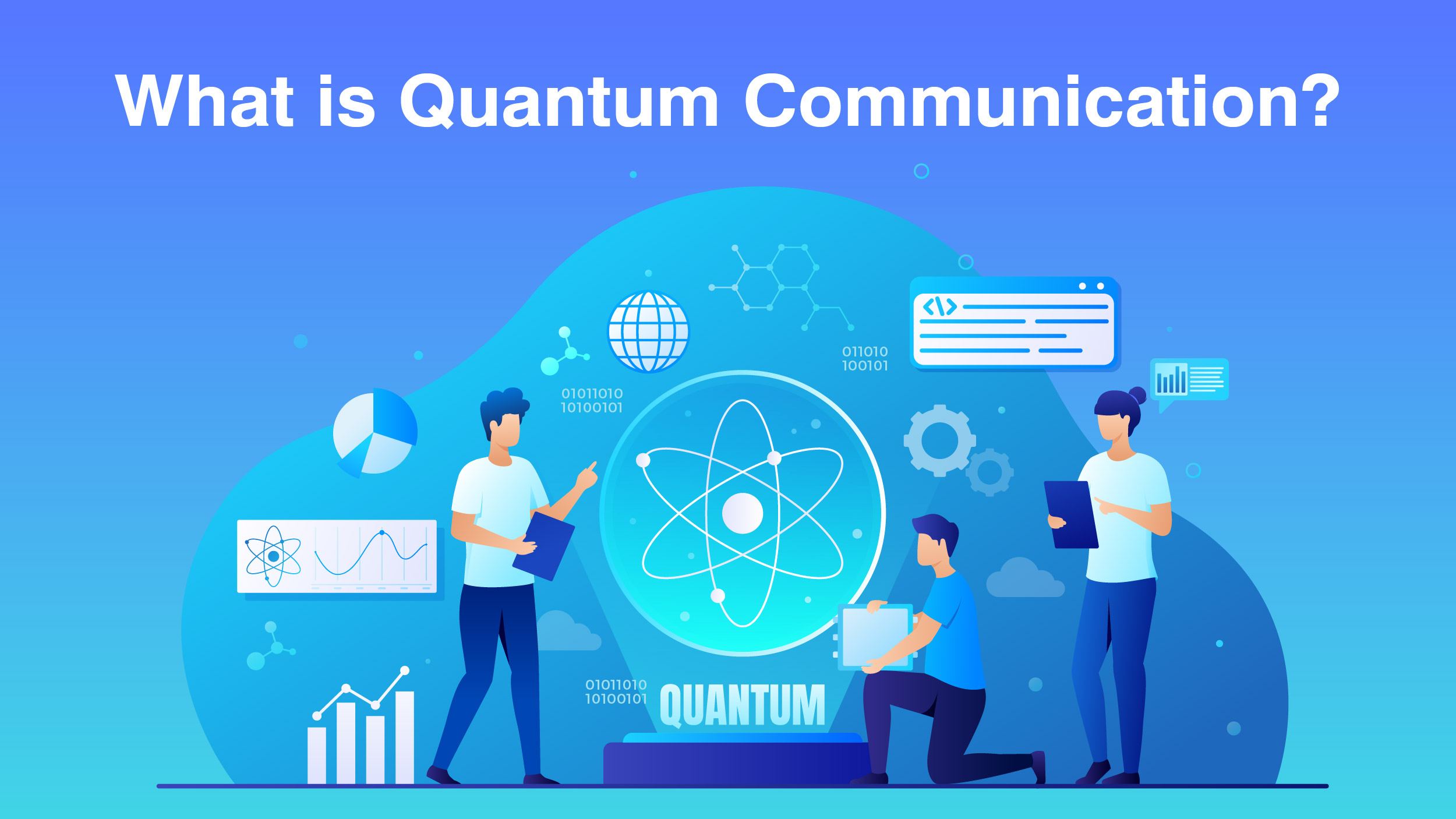It seems like every week there are reports of major cyberattacks that jeopardize sensitive information, from personal details and health records to valuable intellectual property of companies. These threats have compelled governments, militaries, and businesses to search for more secure methods of transmitting information.
In the present day, when sensitive information needs to be transmitted, it is often encrypted and sent alongside digital “keys” that are necessary to decode the data. Both the encrypted data and keys are sent as classical bits in binary code. However, skilled hackers can intercept and replicate these bits during transit without detection.
Quantum communication could be a potential solution to address this problem. So, let’s get started and understand everything about this promising field!
What is Quantum Communication?

Quantum communication utilizes the principles of quantum physics to send and protect information. Unlike traditional binary bits (0s and 1s), it employs qubits, which can exist in multiple states simultaneously.
Consider two particles, such as photons, which are entangled. In this unique state of entanglement, the particles become interconnected in a remarkable manner, despite being physically separated. Any action or change on one particle immediately and simultaneously affects the other, regardless of how far apart they may be.
Imagine you want to send a secure message using these entangled particles. You can encode your message in the quantum states of these particles. Then, when the receiver gets the particles, they can measure their states and decode the message. The fascinating part is that if someone tries to intercept or eavesdrop on the particles during transmission, their quantum state will be disturbed, and the receiver will immediately know that someone has tampered with the message.
Quantum communication possesses a unique attribute that renders it exceptionally secure. Any unauthorized attempt to interfere with the transmitted information will inevitably leave behind evidence of tampering. It is like putting an invisible seal on your message, which becomes immediately apparent if anyone tries to breach it. This field holds the promise of transforming secure communication, particularly for highly
sensitive information such as banking transactions or government secrets. Its unparalleled level of security makes breach nearly impossible. However, as an emerging technology, there are still certain challenges to address before its widespread adoption becomes feasible.
Also Read : Will Quantum Computing AI Be the Next Big Thing?
Is Quantum Communication Possible?
Quantum communication is a captivating field with the potential to transform secure communications. Ongoing research and exploration continue, but according to current scientific consensus, it does not enable communication faster than light or information transfer through quantum entanglement. The principles of relativity and quantum mechanics establish fundamental boundaries on information speed, and there is no evidence or mechanism suggesting these limits can be surpassed.
It’s worth mentioning that although quantum communication does not enable faster-than-light communication, it does offer substantial benefits in terms of security and encryption. By leveraging the properties of quantum entanglement and employing detection methods to identify any interception or tampering attempts, it can establish highly secure channels for transmitting sensitive information.
Benefits of Quantum Communication

Quantum communication presents several distinct advantages when compared to traditional classical communication approaches. Here are some of its key benefits:
- Enhanced Security: It boasts a superior level of security, thanks to the fundamental principles of quantum mechanics. Any attempt to intercept or manipulate transmitted data will disrupt the quantum state of the particles, leaving unmistakable traces. This makes it exceedingly challenging for malicious actors to eavesdrop or tamper with information undetected.
- Unbreakable Encryption: Quantum communication empowers the use of unbreakable encryption techniques. Quantum key distribution (QKD) facilitates the secure exchange of encryption keys between parties. These keys are transmitted utilizing quantum properties, making any effort to intercept or measure them disrupts their quantum state, immediately alerting communicating parties to potential eavesdropping.
- Quantum Entanglement: Quantum communication leverages quantum entanglement, a phenomenon where particles become correlated, regardless of their separation. This property allows for near-instantaneous information transmission, surpassing the constraints of classical communication. It’s important to note, though, that quantum entanglement cannot be harnessed for faster-than-light communication.
- Resilience Against Attacks: It exhibits resistance to various forms of attacks, including brute-force and algorithm-based assaults. Its security relies on fundamental physical principles, rather than computational complexity, rendering it exceptionally robust against quantum computer-driven attacks.
- Future-Proof Technology: Quantum communication is regarded as a future-proof technology. As quantum computers advance, classical encryption methods may become susceptible to breaches. It stands as a secure and dependable solution capable of withstanding the computational capabilities of quantum computers.
It’s essential to acknowledge that while quantum communication offers substantial advantages, it remains an evolving technology with ongoing research and development. Addressing challenges related to practical implementation and scalability is crucial before it becomes widely accessible. Nonetheless, the potential benefits of quantum communication make it an exciting field of exploration with promising applications in secure communication and information exchange.
Winding Up
Quantum communication stands at the forefront of secure communication, marking a groundbreaking frontier. While it may not facilitate faster-than-light communication or harness quantum entanglement for information transfer, its indisputable strengths lie in the realms of security and encryption.
While the field remains in its infancy and grapples with challenges related to practical deployment and scalability, its intrinsic future-proof nature offers enduring security for our digital realm.
As researchers and scientists delve deeper into the intricacies of quantum communication, we eagerly anticipate breakthroughs that will reshape our methods of communication and information exchange. The potential applications of this technology span a wide spectrum, encompassing secure financial transactions, military communications, and an array of other possibilities.
































